tags: Sandwalk, Down House, Darwin, nature, photography, London, England, Bromley, England, Professor Steve Steve
Darwin's "weed garden" experiment, located near the pathway next to Down House, near the Gardens.
Image: GrrlScientist 31 August 2008 [larger view].
Sunday, the day after the Nature Network Science Blog conference was over, Mike, Mo and I caught a train to Bromley, England, where we toured Darwin's Down House and Gardens and walked along the famous Sandwalk that Darwin once walked. This is part two of my photoessay series about Down House, where I focus on the Gardens behind the house. (Since it is the weekend in England, I scheduled this essay to publish an hour later than those that are scheduled to publish during the weekdays).
After touring the Down House, Professor Steve Steve (who can be rather cranky and bossy, no one ever mentioned this to me!) demanded lunch, so we found Mo and went to the Darwin Tea Room to order lunch. It was very crowded -- surprisingly so -- so we sat outside at a damp wooden picnic table under a blue umbrella, but it had stopped raining earlier so it was quite pleasant, in my opinion.
Professor Steve Steve demands a lunch break during our visit to Darwin's Down House. I heartily agreed with his holy bearness.
Image: GrrlScientist 31 August 2008 [larger view].
Mike joined us a little while later, after we all had inhaled our food, so we had plenty of time to stare at his lunch, too.
This was the first course of my lunch; egg mayonnaise (egg salad) sandwiches with hot freshly ground and brewed coffee. At first, the coffee looked like it had been contaminated by the "cult of the cow" (milk), but that was just the head that came with it.
Lunch, course one: egg mayonnaise sandwiches. The entire meal was sublime.
Image: GrrlScientist 31 August 2008 [larger view].
Did I mention the sandwiches were delicious?
The second lunch course was a treat I had never tasted before; hot scones, clotted cream and strawberry jam. I almost skipped the scones in favor of something else because I really strongly dislike raisins, especially when they are lurking in my food -- but that would have been a true tragedy because this was the best thing I ate while I was in England. In fact, just looking at the picture as I write this story makes me wish I was there again, eating this ambrosia.
Lunch, course two: scones, clotted cream and strawberry jam.
This was the first time in my life that I've eaten such ambrosia, and sadly, it remains the only time until this very day!
Image: GrrlScientist 31 August 2008. [larger view].
I did catch Professor Steve Steve leering at my scones. This really bothered me because he is supposed to eat bamboo, but my complaints to him to mind his own plate instead of mine went unheeded: Professor Steve Steve wanted to trade his bamboo for my scones!
Professor Steve Steve leers at my lunch at Darwin's Down House. This is a picture of the hot scones, clotted cream and strawberry jam that was included with my sandwiches. The entire meal was sublime.
Image: GrrlScientist 31 August 2008 [larger view].
I inhaled my scones to avoid having to sit on the wicked little bear or unceremoniously dump him onto the wet ground.
Fortified by a good lunch, Mo, Mike, Professor Steve Steve and I wandered off to explore the outdoors areas behind Down House. First, we sought out those experiments of Darwin's that still existed. First, was his "weed garden." In this experiment, Darwin cleared a small patch of sod and recorded the germination and growth of every seed that sprouted there as the cleared area was recolonized.
We later found another of Darwin's experiments, his "worm stone" experiment, in back of the house by a very large tree (this tree was so large that I wondered if perhaps it was young while Darwin was alive and conducting his experiments). The worm stone was a stone that had been placed into the ground so it was level with the surface of the earth. The stone slowly and steadily sank below the earth's surface due to the action of earthworms turning over the soil.
Darwin's data indicated that earthworms caused his worm stone to sink at a rate of 2.2 mm a year. Using these data, he estimated that the action of earthworms on every acre of his land brought some 18 tons of soil to the surface annually.
Next, we turned our attention to the flowers in Darwin's Gardens, which had been restored and were lovingly tended. Darwin loved plants, but he also loved to study them and in fact, it was probably plants, and not finches, that originally helped him formulate many of his thoughts about evolution and the struggle for survival.
Here, I am standing with my back to the house, facing the Gardens that are immediately outside.
The Gardens behind Darwin's Down House. They were filled generously with "endless forms most beautiful", as Darwin wrote at the conclusion of his seminal book, On The Origin of Species.
Image: GrrlScientist 31 August 2008 [larger view].
The Gardens comprise seven hectares (16 acres) of land behind Down House. This land was very important to Darwin, since he used all of that area to conduct a variety of experiments to formulate, develop and test his ideas. According to my sources, it was mainly due to Darwin's work with plants that gave him the confidence to publish his seminal treatise, On the Origin of Species.
Sundial.
The Gardens behind Darwin's Down House. They were filled generously with "endless forms most beautiful".
Image: GrrlScientist 31 August 2008 [larger view].
As you can see, Darwin grew a wide variety of flowers as subjects for observation and experiment in his home laboratory (and his greenhouses, which I will show tomorrow). He studied pollination of flowers as well as the "behavior" of plants; how they grow, respond to light, how their branches and roots move along walls, how their tendrils climb walls (which explains the vines growing on the outer walls of Down House), and even what happens when a carnivorous plant devours an insect.
The Gardens behind Darwin's Down House. They were filled generously with "endless forms most beautiful", as Darwin wrote at the conclusion of his seminal book, On The Origin of Species.
Image: GrrlScientist 31 August 2008 [larger view].
We also tried to get photographs of the busy bumblebees as they pollinated these flowers. I did not capture any images that I liked, but I think both Mo and Mike, with their large oversized camera lenses, managed to get several very nice images.
A bumblebee, Bombus spp., on a flower in the gardens behind Darwin's Down House, near Bromley, England.
Image: GrrlScientist 31 August 2008 [larger view].
(While I continue telling you about the Gardens, I will show you pictures of Darwin's flowers, since I love them).
The Gardens behind Darwin's Down House. They were filled generously with "endless forms most beautiful", as Darwin wrote at the conclusion of his seminal book, On The Origin of Species.
Image: GrrlScientist 31 August 2008 [larger view].
Sadly, I never saw the restored observational apiary with European honeybees in it while I was visiting. I have no idea what happened to it, since I could not find it anywhere, although it was supposed to be in a lab that was built for Darwin (alas, according to my sources, Darwin died before he was able to use that lab).
Tall and short, red, white, orange and blue, the flowers alone are a beautiful example of the diversity of flowers that Darwin surrounded himself with.
The Gardens behind Darwin's Down House. They were filled generously with "endless forms most beautiful", as Darwin wrote at the conclusion of his seminal book, On The Origin of Species.
Image: GrrlScientist 31 August 2008 [larger view].
Incidentally, while writing this photoessay, I ran across a book that is soon to be published by Counterpoint and that will likely interest you: Darwin's Garden: Down House and The Origin of Species by Michael Boulter. Needless to say, I am absolutely fascinated by this book and am determined to get a review copy so I can tell you all about it on my blog.
If you enjoyed reading the second part of this adventure and want to read more, here is Part One.

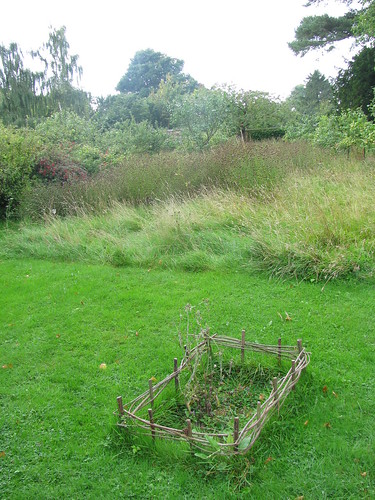


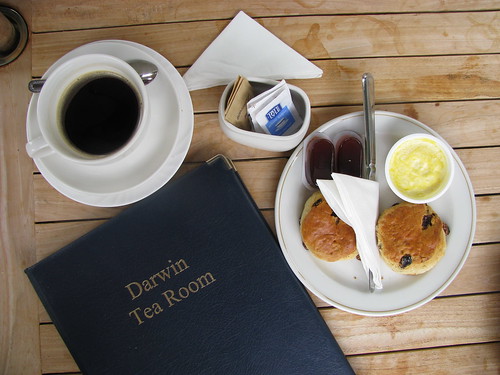

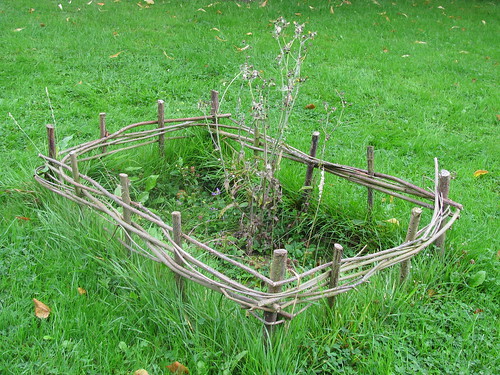

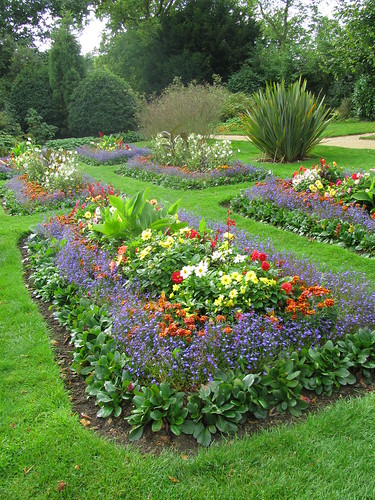
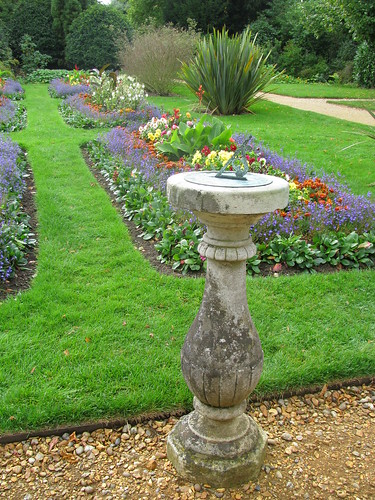
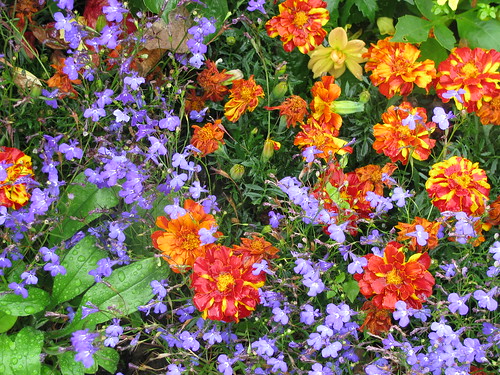

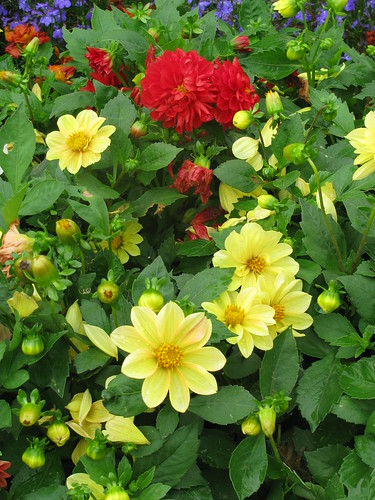
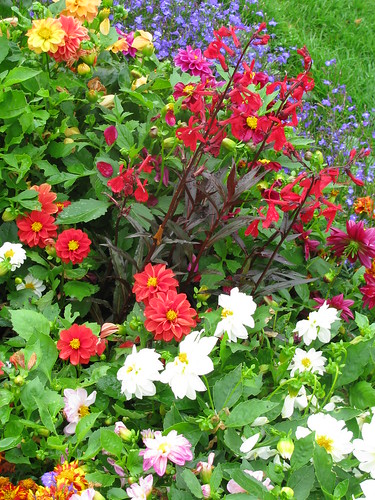
So glad you enjoyed your visit to Down House. A high point also of our UK visit in 2000. And glad you discovered the 'Devonshire Tea' - scones, cream and good jam - too. We met our first English Robin in the garden, and admired the flowers and the huge Red Currants near the cafe.
You might enjoy a book called 'Period Piece' by Darwin's grandchild Gwen Raverat. She was born after his death, but of course remembered much of the family lore about him. It is a very charming book illustrated with her own drawings (she was a professional artist when she grew up).
We were impressed by what a pleasant family home Down House clearly was. We were told that the stairs were always needing a re-paint, because on wet days children were allowed to slide down them on a board made for the purpose. This doesn't sound like the sterner kind of Victorian household.
We saw some horses and riders thereabouts. Our English friend said: "Anyone who can keep a horse on teh South Downs has to be a millionaire!" It seems it's an expensive area.
I enjoy your blog immensely. I hope this message gets through. Best wishes , Anthea
thanks you, anthea! it's interesting to learn that darwin's granddaughter was an accomplished artist, since he was abysmal as an artist.
i am so happy that darwin's down house was restored; it would have been a tragedy if it was lost, as seems to have happened to so many other historic structures in and near London.
I wonder if those plates, cups, saucers and teapots are Wedgwood pottery? I probably checked myself last year but I can't remember.
It just seems to make sense that they ought to be in order to tie in with Darwin's granddaddy.
Having Joseph Hooker as a friend and confidante, it's hardly surprising that plants would have been important in Darwin's work. He was probably very helpful getting Darwin the nicest specimens for his garden as well.
Regarding anthea's comment (#1), I don't doubt you do have to be well-off to keep a horse on the South Downs, but if these horses and riders you saw were anywhere near Down House that would have been the NORTH Downs.
Still - of course - a pricey area (sadly).
I am sure he is not pleased with the lies he propagated of from the prince of darkness while alive. For now-in the torments of Hell? he knows better.I pray you will all awaken before it is too late for you as well. The house should have burned up.It is an abomination that people nearly worship this Anti-Christ.
Your UK pieces are great, GrrlScientist and this is the best yet. Thanks for sharing. I love the sense of history you get when visiting places like this, it helps you to appreciate humanity.
SUSAN -- um, yeah, right, just like visiting washington's or lincoln's homes are "nearly worship" .. and i hate to do this to you, but here goes: THERE IS NO HELL (except maybe the hell on earth created by religious wackjobs) just as there is NO HEAVEN and NO GOD.
@Susan#3
It's disgusting that a religiously blinkered person such as yourself cannot, or perhaps will not, see what a gentle and truth-seeking spirit Charles Darwin was. He uncovered some of nature's secrets, an accomplishment worthy of the best of humanity. Your comments place you among the worst.
Sue, Darwin has many people to smite, plagues to send and babies to dash against rocks before he can reach a loving god status. Personally, I just can't worship him until he gets these things done. I do have an incredible amount of admiration for his work, but he is no god.
I wanted to let you know that there is a great place for scones on 10th ave, between 46th & 47th called BisCoLatte. The currant ones are the best! I hope you can come down and get them sometime.
I wanted to let you know how much I am enjoying the series. What beautiful pictures.